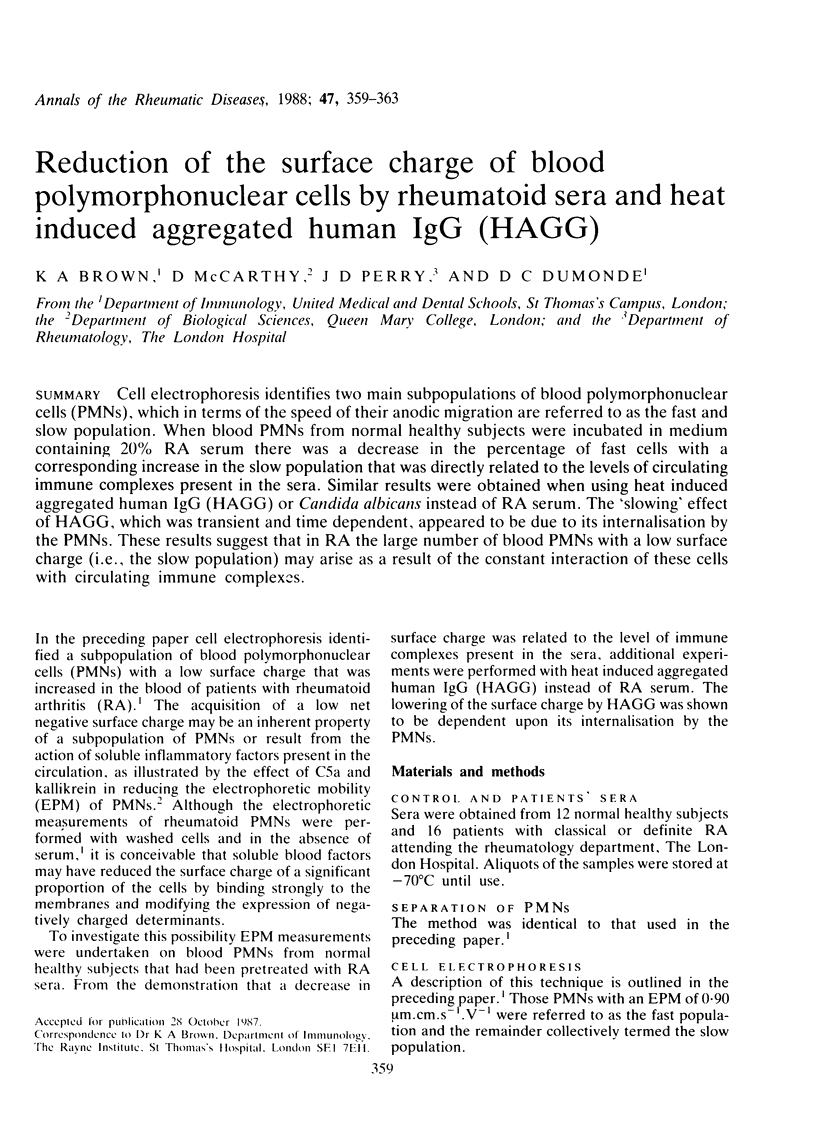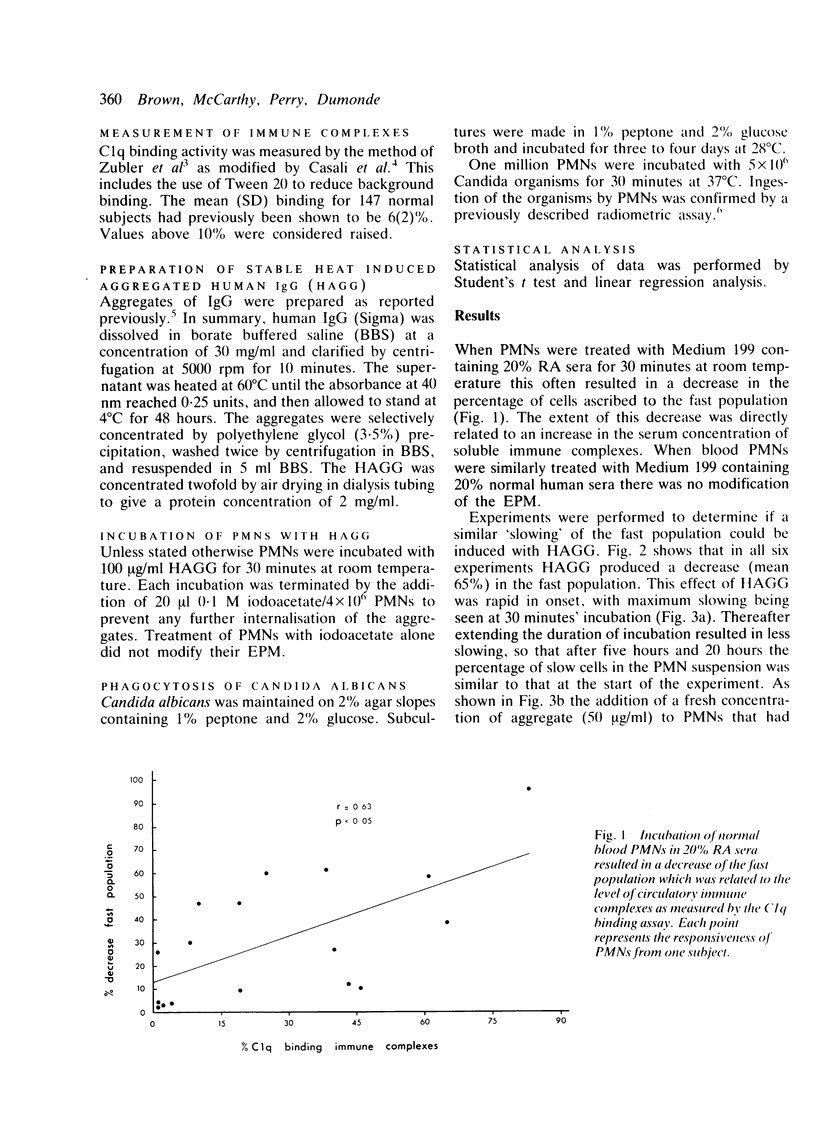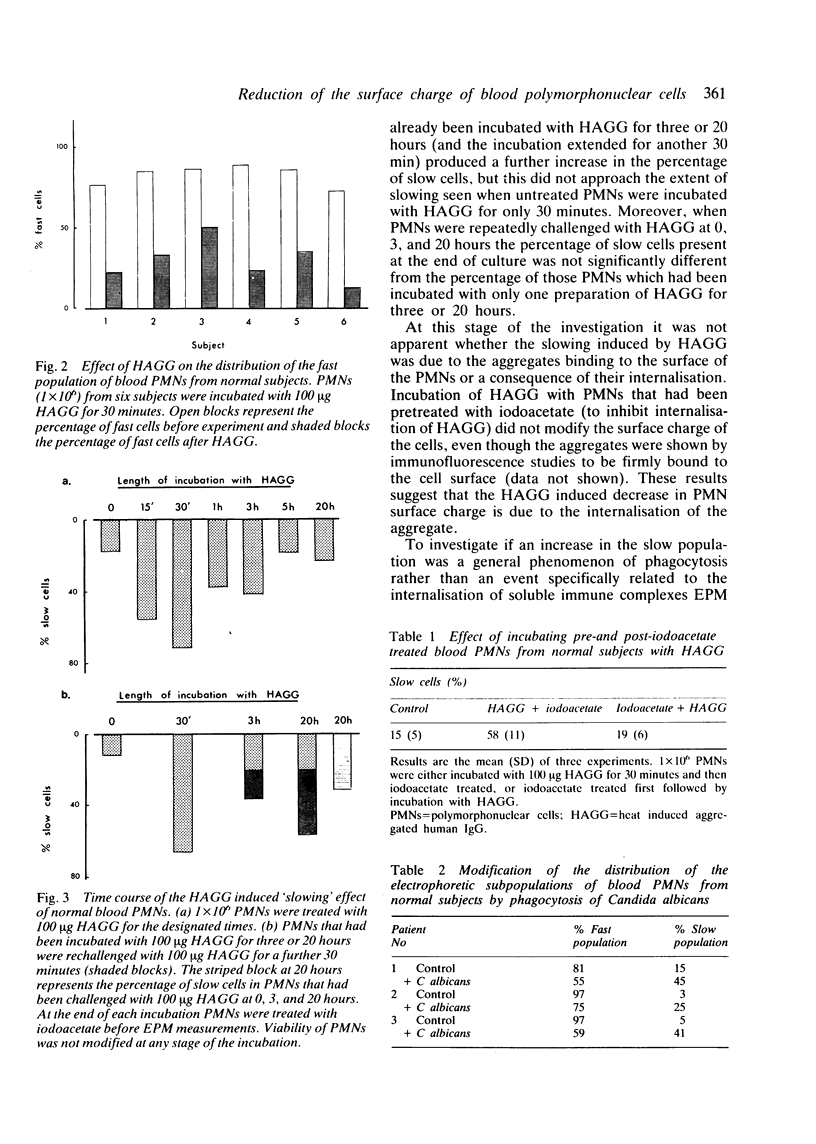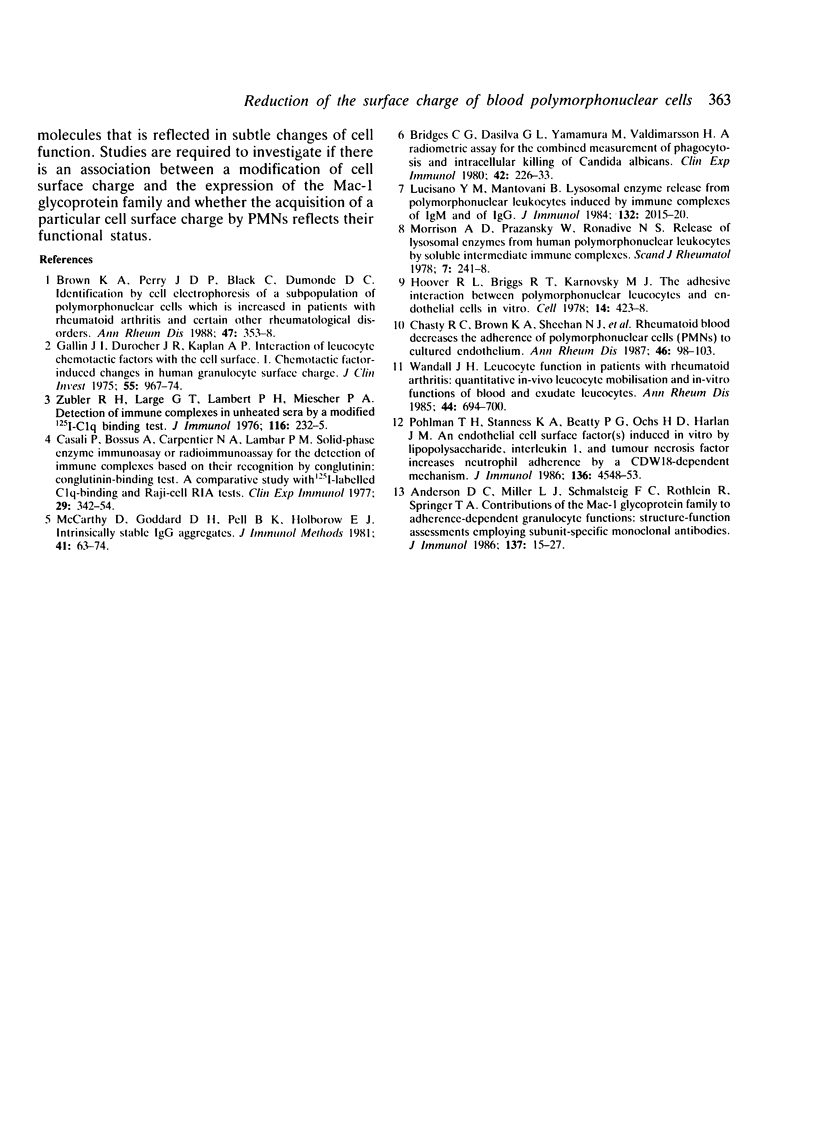Abstract
Cell electrophoresis identifies two main subpopulations of blood polymorphonuclear cells (PMNs), which in terms of the speed of their anodic migration are referred to as the fast and slow population. When blood PMNs from normal healthy subjects were incubated in medium containing 20% RA serum there was a decrease in the percentage of fast cells with a corresponding increase in the slow population that was directly related to the levels of circulating immune complexes present in the sera. Similar results were obtained when using heat induced aggregated human IgG (HAGG) or Candida albicans instead of RA serum. The 'slowing' effect of HAGG, which was transient and time dependent, appeared to be due to its internalisation by the PMNs. These results suggest that in RA the large number of blood PMNs with a low surface charge (i.e., the slow population) may arise as a result of the constant interaction of these cells with circulating immune complexes.
Full text
PDF




Selected References
These references are in PubMed. This may not be the complete list of references from this article.
- Anderson D. C., Miller L. J., Schmalstieg F. C., Rothlein R., Springer T. A. Contributions of the Mac-1 glycoprotein family to adherence-dependent granulocyte functions: structure-function assessments employing subunit-specific monoclonal antibodies. J Immunol. 1986 Jul 1;137(1):15–27. [PubMed] [Google Scholar]
- Chasty R. C., Brown K. A., Sheehan N. J., Kirk A. P., Perry J. D., McCarthy D., Dumonde D. C. Rheumatoid blood decreases the adherence of polymorphonuclear cells (PMNs) to cultured endothelium. Ann Rheum Dis. 1987 Feb;46(2):98–103. doi: 10.1136/ard.46.2.98. [DOI] [PMC free article] [PubMed] [Google Scholar]
- Gallin J. I., Durocher J. R., Kaplan A. P. Interaction of leukocyte chemotactic factors with the cell surface. I. Chemotactic factor-induced changes in human granulocyte surface charge. J Clin Invest. 1975 May;55(5):967–974. doi: 10.1172/JCI108026. [DOI] [PMC free article] [PubMed] [Google Scholar]
- Lucisano Y. M., Mantovani B. Lysosomal enzyme release from polymorphonuclear leukocytes induced by immune complexes of IgM and of IgG. J Immunol. 1984 Apr;132(4):2015–2020. [PubMed] [Google Scholar]
- Pohlman T. H., Stanness K. A., Beatty P. G., Ochs H. D., Harlan J. M. An endothelial cell surface factor(s) induced in vitro by lipopolysaccharide, interleukin 1, and tumor necrosis factor-alpha increases neutrophil adherence by a CDw18-dependent mechanism. J Immunol. 1986 Jun 15;136(12):4548–4553. [PubMed] [Google Scholar]
- Wandall J. H. Leucocyte function in patients with rheumatoid arthritis: quantitative in-vivo leucocyte mobilisation and in-vitro functions of blood and exudate leucocytes. Ann Rheum Dis. 1985 Oct;44(10):694–700. doi: 10.1136/ard.44.10.694. [DOI] [PMC free article] [PubMed] [Google Scholar]
- Zubler R. H., Lange G., Lambert P. H., Miescher P. A. Detection of immune complexes in unheated sera by modified 125I-Clq binding test. Effect of heating on the binding of Clq by immune complexes and application of the test to systemic lupus erythematosus. J Immunol. 1976 Jan;116(1):232–235. [PubMed] [Google Scholar]


